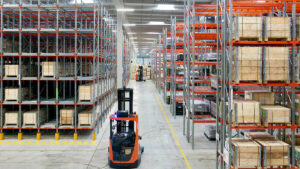Carbon emissions are damaging the environment at an alarming rate, putting the future of our planet at great risk, and net zero house design are a promising solution to reducing emissions.
Today, buildings are responsible for more than 40% of global energy consumption, and as much as 1/3 of global greenhouse emissions are contributed by buildings. Greenhouse gas emissions from building primarily arise from their consumption of fossil-fuel energy. Hence, emissions from buildings need to be assessed through a life cycle approach. Few key points on building and building construction and its relation to climate changes.
- The building sector has the highest potential for delivering significant and cost-effective reductions in greenhouse gas (GHG) emissions.
- Countries will not meet emission reduction targets without supporting energy efficiency gains in the building sector.
- Failure to encourage energy efficiency and low carbon solutions when constructing new buildings or retrofitting old ones, will lock countries into the disadvantages of poorly performing buildings for decades.
As environmental conservation increasingly becomes a concern to individuals and institutions alike, designers of the built environment appreciate that it is contributing significantly to global warming. You will most likely have heard of terms such as “carbon-zero”, “net-zero” and “climate-positive”, and they can be a bit confusing. ”Net-zero carbon”, means that a system removes as much carbon from the atmosphere as it emits, or does not produce any carbon emissions at all. “Net-zero emissions’ means that overall greenhouse gas (GHG) emissions from a system balance out with the emissions it removes from the atmosphere. These concepts were born from initiatives such as the legally binding Paris Agreement, an international treaty adopted by 196 parties in France in December 2015, and came into force in November 2016. The treaty aims to reduce the level of global warming to 2 degrees Celsius lower than the levels before industrialization. So, how does all this lead to a “net-zero house design”?
Learn about Future Homes: Modular and Manufactured Innovations (IC)
1.0 What is a Net Zero House Design?
The US Energy Department defines a Net Zero Building as one that is energy-efficient and produces as much renewable energy as it consumes annually from the grid, or more. However, other concepts come into play. For example, a net-zero house should also be net-zero water. A net-zero house is a building that generates enough renewable energy to meet its needs, and minimizes water consumption, and recycles its waste, giving back to the environment in equal measure (net-zero water). Net-zero concepts have become a major topic in real estate development, and net-zero houses are appearing in many places around the world. Research by Guidehouse Insights found that the global net-zero energy houses market will increase by 28% between 2021 and 2028. More net-zero houses have been built within the last decade than ever before, times due to a few favourable factors.
Helpfully, costs involved in climate-sensitive house designs have been reduced by almost a half. Equipment such as solar panels have become cheaper, and new insulated formworks for airtight walls are widely available. More homeowners can now venture into building net-zero homes, but what exactly defines a net-zero house design?
2.0 Criteria for Net Zero House Design
There are three main design considerations for a net-zero house design:
- Energy
- Water
- Waste
2.1 Energy conservation – Net-zero energy
Energy conservation is one of the core ingredients of a net-zero house design. It means having a well-insulated, airtight building envelope from a holistic perspective. The building envelope refers to all the surfaces that enclose the volume of the building. This includes windows, doors, roofs, and floors. When it comes to energy conservation, this envelope must be made air-tight to ensure that no energy is lost. Energy conservation in net-zero house designs aims to:
- Conserve as much energy as possible
- Absorb as much free energy as possible
- Produce as little energy as it needs.
2.2 Water conservation – Net-zero water
A house that is “net-zero water” minimizes or does its best to use alternative sources of water and produce as much as it needs, rather than taking from the regular supply, which requires an entire municipal network of water supply, massive water treatment plants and dam and reservoirs. These do have some impact on the environment. Net-zero water would require a building to completely reuse wastewater by way of super-efficient water treatment facilities. Moreover, adequate rainwater harvesting, and utilizing of rainwater for domestic usage purposes must be carried out. A water balance diagram would help identify if a building is a net-zero building regarding water consumption.
2.3 Waste Management – Net-zero waste
Net-zero house designs pay keen attention to waste management. This involves both wastes generated during construction and life cycle waste generation. Zero waste to landfill is a concept not limited to only manufacturing, but it is very much relevant to the construction industry. Topsoil preservation, re-use of excavated soil within the building site premises etc. are basic requirements for Net Zero Waste management. During the operation phase, the wastes produced such as wet and dry wastes generated. The wet wastes generated can be treated by way of an organic waste converter. These OWCs help convert the organic wastes to composts. Additionally, the sewage waste generated is treated by way of the sewage treatment plan. As per the Sustainable development goals 6.3.1 targets wastewater and helps push towards a goal of 100% proportion of wastewater to be safely treated. However, according to data from 128 countries only 66% of household wastewater flows have received treatment in 2020.
Conforming with these design criteria may appear intimidating at first, but it’s easier than you think. Let us take a closer look at how these goals can be achieved without breaking the bank.
3.0 Net Zero House Design Strategies
There are many non-costly, and innovative building systems and technologies that help home builders achieve these amazing house designs. Some of the strategies used in designing net-zero houses are:
3.1 Reducing water heating costs
A whopping 20% of a home’s annual electrical usage is used for heating water. This can be reduced greatly through innovative technology such as heat pump water heaters, which dump hot air through pipes into the heater and pump cool air into the ventilation system, further reducing HVAC energy needs.
3.2 Minimizing the usage of glass
Designing a net-zero house might mean reducing the surface area covered in glass. Insulation efforts aim at retaining as much energy within the building envelope as possible. The orientation and size of glass windows become important factors in ensuring maximum heat retention, to reduce the energy needed to keep the house warm.
3.3 Air sealing walls
Air sealing a house can improve the experience of its dwellers and reduce energy consumption by 25%. Airtight walls prevent heat from escaping in cold seasons and block excess heat in hot summers. This reduces the work of the home heating systems, saving on energy bills.
3.4 Well designed Equipment
Using well designed/not over-designed equipment is a sure way of reducing energy consumption, helping a house remain within the net-zero standards. High-quality air conditioning equipment, for example, uses less electric power.
3.5 Renewable solar energy
If having a passive home that conserves as much energy as possible will not help you to meet the net-zero status, then the next thing to do is produce your own solar power. High-quality solar panels can generate as much as 60% of the house’s energy needs. When building a net-zero home, installation of solar panels should not come as an after-thought, but should rather be integrated into the design from the beginning. Roofs can be covered in as many panels as needed and should have the perfect orientation to maximize the available sunlight.
3.6 Passive Solar Systems
The term “Passive House ” was defined in a voluntary standard by PassiveHaus Institute in Germany. The standard promotes architectural design principles in which strict levels of energy efficiency are required. A passive house is one whose interior climate can be maintained without the use of active heating, and this can be achieved with passive solar systems, or heating the house with wind energy. This standard aims to reduce the house’s impact on the environment and is a step towards net-zero homes for a greener future.
Explore on Single Floor House Designs
4.0 From Net Zero House Design To Climate Positive House Design
If you like the “net-zero” house design concept, then you will love “Climate Positive House” (CPH) designs, for they go beyond net zero. A CPH is not only “climate neutral”, but also makes an additional contribution to the environment by producing 105% of its energy needs, the term “climate positive” can be taken to mean all concepts that result in a net positive effect on the environment. While we may have fully climate positive cities in the next decade, our neighbourhoods can be revamped with non-expensive technologies to at least be climate neutral, each unit producing its own renewal power, recycling water and managing waste on-site.
As the world joins efforts to conserve the environment, more designers of the built environment are adopting net-zero house designs for new buildings. Net-zero houses are the homes of the future. Engineers and designers seem to be working day and night to bring innovative techniques and products to build greener homes and save the future.
While building net-zero houses has become affordable, and along with a significant increase in their construction, many people have not seen one in real life, but hey, there will soon be one near you.
5.0 Net Zero House Design – What’s Next?
Are you an aspiring homeowner or developer? A net-zero house design could be your next project without additional costs! Even an existing house can be easily revamped into a net-zero house with a small budget. There are good net-zero house designers and architects that you can chat with and begin the amazing green journey of eliminating your energy bill and saving our planet.
Have you had an experience with a net-zero house? Share your thoughts with us in the comments! We can’t wait to hear it!
Explore on Architectural Design Process for Residential Development





